


Disclosure: We received a review unit of the Fractal Define R5 Black for the purpose of this review. The unit retails for $109 on NewEgg.
When it comes to quiet computing, choosing the right case is just as important, if not more so, than the components that go inside it. And often leading that pack is Fractal, a company whose Define R-series has been one of the most popular mid-tower options for casual builders and enthusiasts alike. Its latest model is the R5, and we spent some time with it to see if it's as cool - in more ways than one - as it is quiet.
Design
The Fractal Define R5 continue the company's trend of forgoing an aggressive, space-age look for more utilitarian aesthetics. Its exteriors are nearly all flat, uniform surfaces. Our sample came in windowless black, though white, titanium, and windowed models are also available. A blue hard drive activity LED gives the case a small edge of color as its light encircles the power button, as well as through a rectangular cut in the front door. A headphone jack, microphone jack, reset button, and a welcome four USB inputs (two 2.0 and two 3.0) line the top.
Because the case is designed for noise reduction, in its default configuration there are less openings for sound to escape. Despite that, air flow is aided by wide vents near the front door that run down the entire height of each side. A single 140 mm fan, behind an easily removable dust filter, draws air in. Another fan can be installed beneath it. Both positions additionally support 120 mm variants. The speeds for up to three fans can be adjusted in three levels thanks to a simple fan controller resting above the two 5.25" bays.
Dust in further kept in check with a screwless filter that covers the entire breadth of the case's underbelly. This too is easily removed, thankfully accessible from front rather than the more common rear access, and snaps back in place fairly securely.
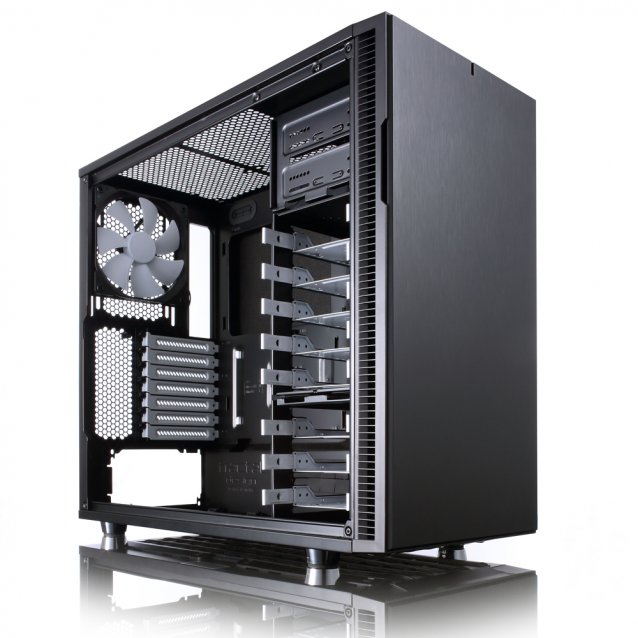
A second 140 mm fan provides exhaust toward the back of the case. While that's the extent of included air cooling, the Define R5 can accommodate a total of nine fans. Three "ModuVent" covers can be removed at the top for placement of three 120/140 mm fans. A cover on the windowless model can be removed for a single 120/140 mm fan. Two similarly sized fans can be installed on the very bottom. For those who prefer water cooling, radiators can be installed at either the front (up to 360 mm), top (up to 420 mm), bottom (120/240 mm), or back (120/240 mm) of the case.
Before taking a closer look inside, there are a few final observations to make mention of. The case is a good, hefty size at 9.1" x 18.1" x 20.9" (W x H x D). It is a little shorter than the Corsair 550D, a competitor to the Define R5, but not dramatically so. The most notable difference lies with the extra space afforded to the front fans on the Fractal, which comparatively reduces the amount of 5.25" bays that can be fitted. Unless you're running more than two disc drives and/or third-party fan controllers, that shouldn't be an issue.
Finally, the front door can be set to swing open from either direction. It does not use a magnetic mechanism, however. You'll have to manually set it with a little work. The same is true with the aforementioned ModuVents. They're only removable from within the case itself. It's not as simple as pushing down a release switch. I may be asking too much for a case that only costs $99 [editor's note: the price seems to be varying rapidly] from certain retailers, but I'd love to see those ease-of-life features make it into the Define series.
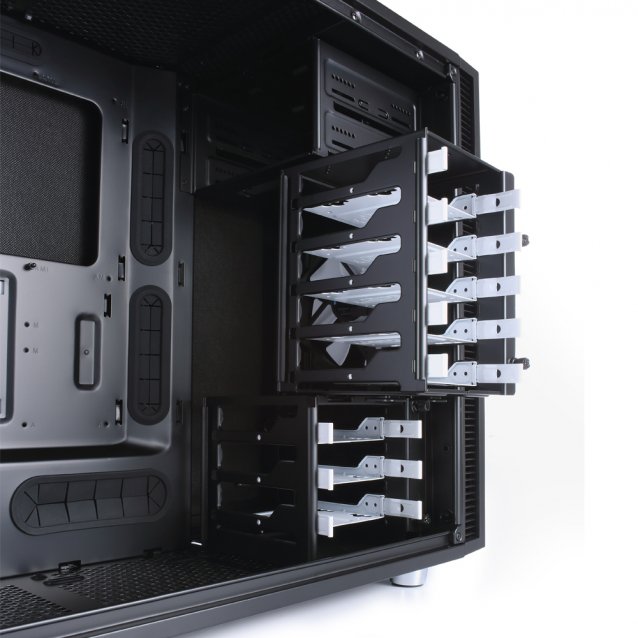
Opening the side panels, which first requires the removal of a set of screws, gets us a good look at the noise isolating material lining the sides, top, and the front door of the case. It's not particularly thick, although it does have a higher quality feel to it versus the foam used in competing products. Likewise, there's very little cheap plastic to be found inside. Metal abounds in nearly every corner.
The rest of its interior is fairly traditional with a few exceptions. The two HDD cages, which hold three and five trays respectively, can be removed to increase air flow and give extra room to the graphics card. Similarly, the ODD cage can be taken out. But Fractal offers the ability to do something more interesting here.
The HDD cages can be placed in several different configurations. They can be rotated to face the motherboard and moved throughout the case, either horizontally next to each other or vertically. The modibility of the Define R5 is applaud worthy, though make sure you have a small screwdriver handy if you're going to reposition the cages. The three-tray cage has screws in its roof that you may have to remove first.
Rubber grommets are located near the power supply and along the side and top of the motherboard. Built-in velcro ties in the back help with cable management, with plenty of space to keep the side panel from bulging outward. Two 2.5" drives can be hidden behind the motherboard tray, as well, held in place vertically with a set of screws on top of a white metal trays.
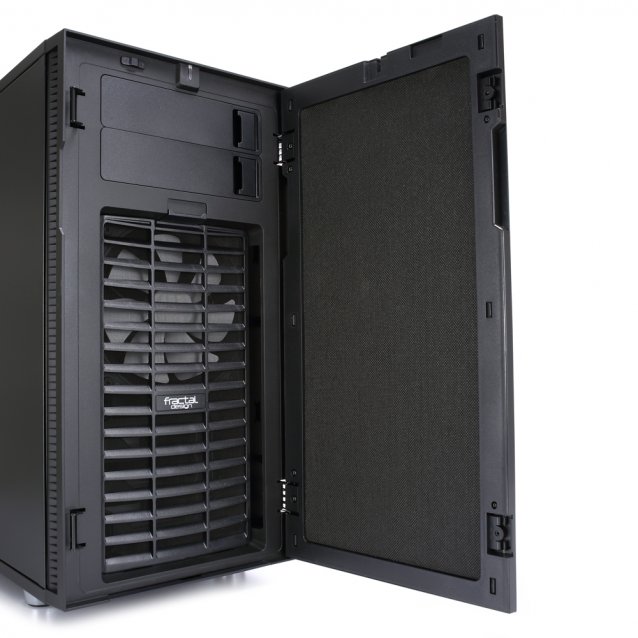
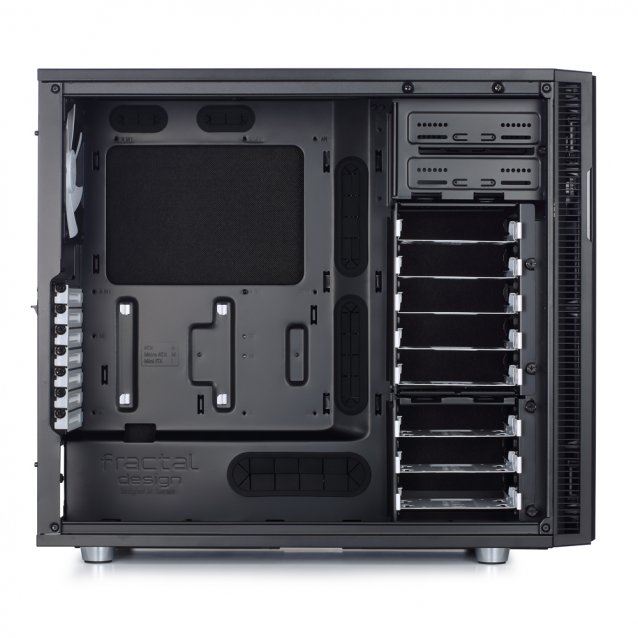
Installation
Moving components into the Define R5 doesn't demand anything out of the ordinary. It isn't a completely toolless system, however. Mounts need to be placed by hand before the motherboard can be seated. The hard drive trays support 2.5" and 3.5" drives, both of which require screws. Anti-vibration grommets fit into holes underneath the 3.5" drives in an attempt to keep their noise in check.
My only concern was with the hidden 2.5" trays. There's little space to connect the necessary SATA and power cables unless their heads are completely flat. It's possible to buy such cables, but most power supplies and motherboards come with ones with L-shaped heads. Aside from that discovery, assembly was quick, painless, and relatively clean. It had no trouble fitting our long Radeon R9 290, too, with several inches of clearance between it and the hard drive cage.
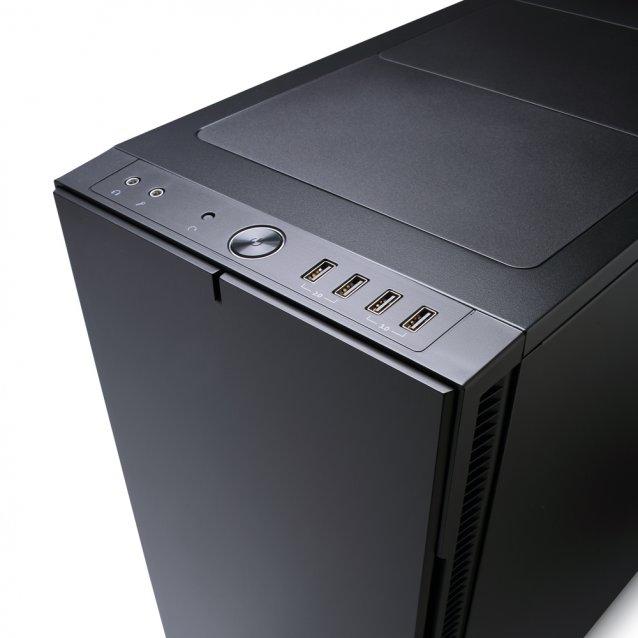
Noise & Temperatures
The Define R5's noise isolating material does a great job at reducing noise levels, specifically high frequency sounds. At ear-level it was still possible to hear the 700-1000 RPM fans, hard drive, and the GPU under load, but it was a more gentle, consistent hum than a roaring annoyance. Better fans should lower the decibels even further.
Any irritating noise came from the hard drives themselves. The anti-vibration grommets didn't do the best job at keeping their reverberations under complete control, which can translate through the cables and onto other surfaces. This unfortunately isn't uncommon. The solution is often a slight realigning of the cables or even a soft knock on the side panel until things are positioned in just the right way.
The temperature results were decent for an enclosed, air-cooled case even in a small room during hot summer hours. All of the components inside were stock. We had no third-party CPU cooler or additional fans installed.
Idling, a 3rd-generation Intel i7 processor averaged 37 degrees Celsius. The motherboard was a smidgen lower at 36 degrees. The Radeon R9 290 idled at 41 degrees. Three hard drives - two 3.5" and one 2.5" - were installed on the five-tray cage lowered to the bottom of the case, with the three-tray cage that was previously below it removed. They hovered between 29 to 35 degrees, the SSD naturally being the coolest.
Under load, the CPU reached 55 degrees Celsius. The motherboard rose to 45 degrees, and the GPU to 74 degrees. The hard drives ranged between 33 to 43 degrees. For a closed case, those numbers are comparable to many other mid-towers.
Conclusion
The Define R5 is another knock-out from Fractal. It's quiet and reliably cool despite the abundance of noise-isolating material, and its versatility is sure to please even the most seasoned builders. I'd like to see more ease-of-life features make their way into that particular lineup, but the extra few minutes needed for assembly don't take much away from a solid, highly recommended case.


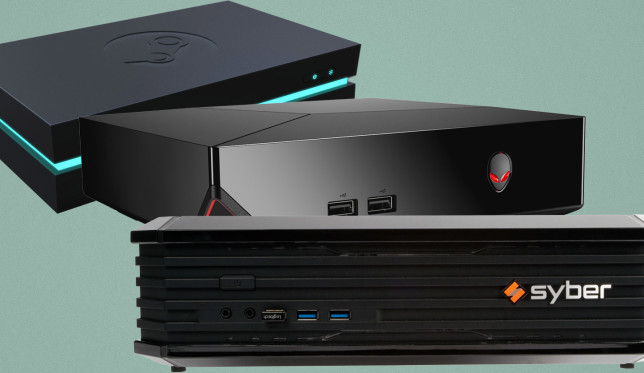

 Fallout 4 Guide: Get Unlimited Caps and Buy Everything From Vendor
Fallout 4 Guide: Get Unlimited Caps and Buy Everything From Vendor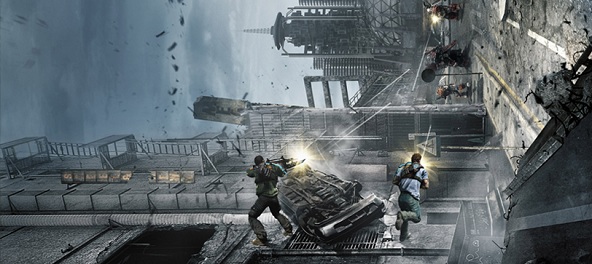 Inversion Walkthrough
Inversion Walkthrough 5 Project Management Courses For Just $39
5 Project Management Courses For Just $39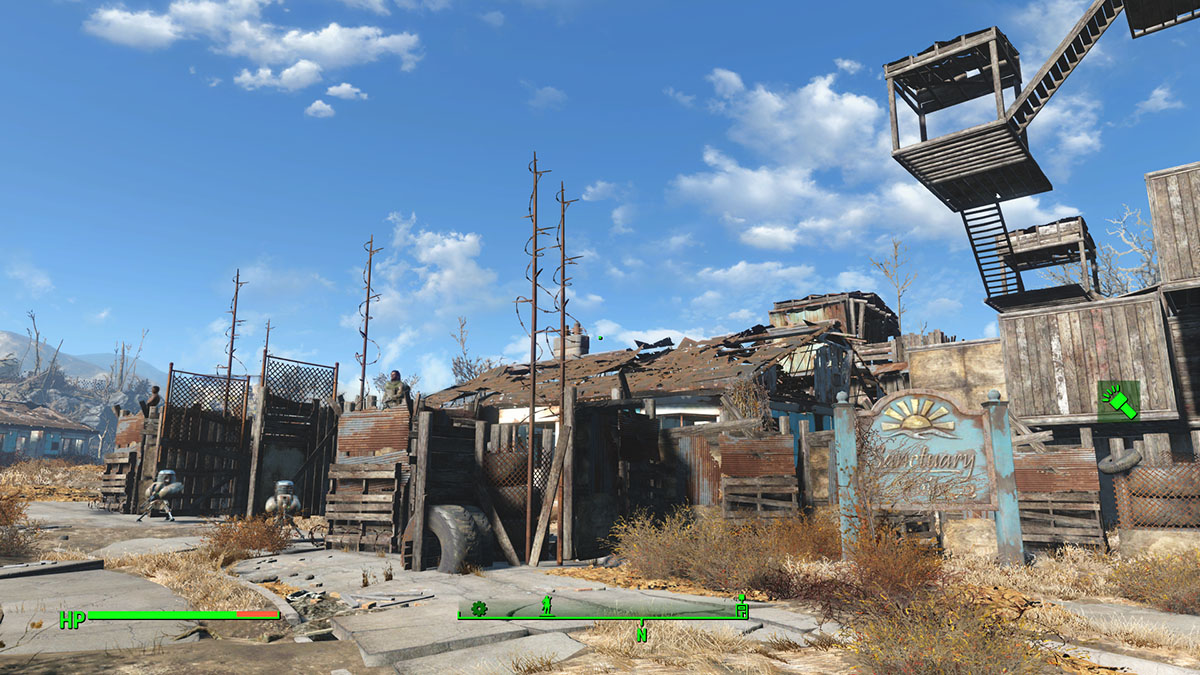 Fallout 4 Guide: How to Debug Unstuck Settlements
Fallout 4 Guide: How to Debug Unstuck Settlements Gameplay Crescendos And What They Mean For God of War: Ascension
Gameplay Crescendos And What They Mean For God of War: Ascension